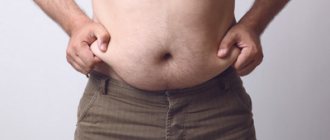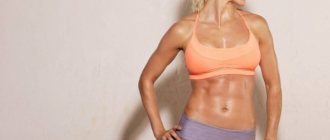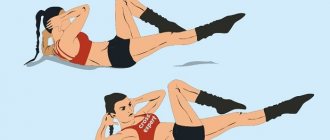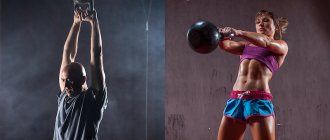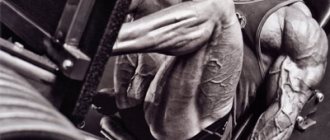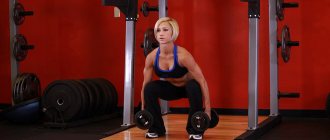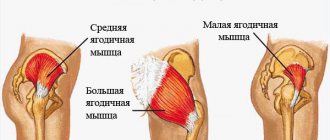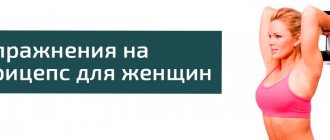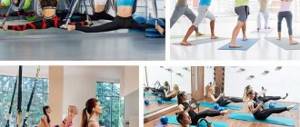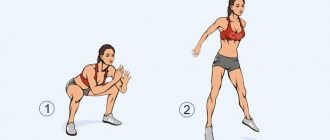The plank is a very popular static exercise that allows you to work key muscle groups and promote weight loss. One of the advantages of the plank is that it has many types, thanks to which you can diversify your workout and shift the load on certain muscles. The reverse plank is an exercise that is no less popular than the classic one. Let's look at how to do it and what it is.
Features and benefits of the exercise
The reverse plank is a popular exercise that allows you to effectively work out your muscle corset using only your own weight. The load on all muscle groups accelerates blood flow, saturates organs and systems with oxygen, and increases the tone of the body.
Regularly performing the reverse plank allows you to achieve the following results:
- The fight against fat in the lower abdomen - and this is precisely the area that is very problematic, especially in women.
- Strengthening the muscles of the upper abdomen.
- Improving the tone of the back muscles, eliminating lower back pain and strengthening the muscle corset, as a result of which the posture will become much better.
- The exercise also improves flexibility and coordination.
- The reverse plank helps strengthen the muscles of the upper limbs, preparing them for further loads with the use of weights.
- The exercise forms beautiful buttocks and the back of the thighs.
Thus, with just one exercise you can eliminate excess weight, correct your posture, and also get rid of pain in the lumbar region.
What muscles work
Let's look at what muscles work when performing the reverse plank exercise:
- All abdominal muscles: rectus and pyramidal.
- Reverse plank modifications work the external internal and oblique muscles.
- The exercise helps stretch the lumbar muscles, in particular the quadratus lumborum muscle, which is one of the main components of our muscle corset.
- Since in a fixed position we rely on our limbs, the exercise process involves the muscles of the thighs: flexors and extensors, adductors, and calf muscles.
- The muscles of the upper extremities are also involved, namely the large muscles of the forearm, brachioradialis, ulnaris and triceps brachii.
- The gluteal muscles are actively involved.
Thus, with one static position we develop a large number of muscles at once.
Muscle groups worked
The main muscle groups that experience stress when performing various types of planks remain unchanged - these are the muscles of the back, arms, legs, abdomen and gluteal muscles. Due to the specifics of the reverse plank, the following muscles are subjected to the greatest loads, and, therefore, effectively worked:
- The main emphasis of the reverse plank lies on the back muscles. The musculoskeletal system is one of the most important components of the human body, which accounts for most of the daily loads, from maintaining balance and correct posture to lifting weights. For a sedentary person, the back muscles are one of the most problematic areas, prone to frequent pain and fatigue. The reverse plank allows you to stretch and evenly load the superficial and deep muscles of the back, neck and back of the head, making them stronger and more relaxed.
- The arm muscles, particularly the biceps and triceps, take the weight of your torso. Due to this, blood flow improves, muscles receive more oxygen, which has a beneficial effect on their functionality. The reverse plank remarkably strengthens the arms without visual changes, which is especially important for girls.
Advice
The reverse plank strengthens the core muscles responsible for stabilizing the body. By doing the exercise 3-4 times a week, you will improve your posture, tighten your muscles and experience ease of walking.
Execution technique
Let's look at how to do the reverse plank exercise correctly. It can be modified to either lighten or increase the load. To prevent possible injuries, it is better to lay a special rug or mat. In the classic version, the exercise is done as follows:
- Place a rug on the floor. Sit comfortably on it with your legs extended in front of you and bring them together.
- Tilt your back a little, about 45 degrees, rest your hands behind your back, so that your hands and shoulders are located in the same projection. Turn your fingers towards you.
- Place your feet and hands on the floor and push your body up toward the ceiling, tensing your leg muscles and lifting your buttocks.
- In this case, it is necessary to avoid bends and bulges of the body during deflection. The body should be in a straight line.
- Stay in this position as much as you can, for at least 15 seconds. During this time, it is important to be clearly in the correct position, without relaxing the buttocks and stomach - otherwise the exercise will not make sense.
- Finally, lower your buttocks smoothly and slowly. It is better to relax only when you have already touched the floor with your buttocks.
If you have some preparation, you can repeat the fixed pose immediately after you lower yourself onto the mat. For beginners, after returning to the starting position, you can rest a little.
Why is it worth doing a plank?
The straight plank is at the peak of popularity today. It is performed by beginners who have crossed the threshold of a fitness establishment for the first time, and by advanced fitnessists with pumped up muscles and a toned body. The plank uses many muscles at the same time and at the same time gives quick results. This is its main difference from many other bodyweight exercises.
Interestingly, only those people who have sufficiently strong core, hip, back and arm muscles can stand in the plank. Otherwise, a person cannot last even a minute. There are even special tests on the Internet that determine the level of training of an athlete by the amount of time spent in the plank position.
But all this is relevant in relation to the classic exercise - the straight plank. And there is also such a variety as the reverse. It is more difficult and requires more effort and skill. But it also gives you more bonuses! So what do you get if you wait for the “starting” 30 seconds?
Varieties of back plank
The reverse plank on straight arms has many different variations, thanks to which you can shift the load. Any change in the starting position will help redistribute the load. Options for the back plank may be as follows:
- The simplest option for changing the starting position is to turn your hands with your fingers towards you before lifting your body. Thus, the load from the brachialis muscle will shift to the biceps muscle.
- If you want to properly work out your shoulder joints, then when performing the exercise, try to place your hands as far away from the body as possible . Increase this distance gradually, focusing on the nagging pain in the shoulder area. When you stretch the ligaments of the joints so that there are no unpleasant sensations in the shoulders, you will be able to move your hands further.
- To improve stretching of the gluteal and thigh muscles, you can resort to reverse plank hip raises. In this case, you need to rise from the following starting position - sit on the floor, lean your body back 35-45 degrees, lean on your hands, turn your fingers towards you, bend your knees. Let your feet rest completely on the floor. Climb into the half-bridge without bending your body. Once you have mastered this position, you can modify it slightly by placing your hands closer to your body and straightening your legs completely. In the final position, the body should be slightly bent.
- A rather difficult version of the reverse plank, which increases the load on the supporting limbs, effectively works the thigh muscles and improves stretching. The starting position is the same as for the classic back plank. Perform forward swings while already in a fixed position or at the same time as rising into it. When the swing leg is bent, it is easier to maintain balance; if it is straight, it is more difficult. It is most difficult to perform this exercise when the leg rises very slowly and falls just as slowly.
- This variation of the reverse plank helps to work out problematic inner and outer thighs. When performing the exercise, first fix the position at the highest point, and then move your legs to the sides. The simplest option: rise to the reverse plank, perform three swings with one leg, lower, rest a little, rise again and do similar swings with the other leg.
- You can increase the load on the oblique abdominal muscles by performing crunches. Without changing your body position, rotate your pelvis in a fixed position.
- You can complicate the exercise by lifting and alternately stretching your arms, simultaneous swings of your legs and arms, both on the same side and opposite.
The reverse plank can also sometimes be performed with weights.
Usually, for this, a dumbbell is taken in one hand. Having risen to the plank position, you must pull the weight towards the pile with your arm bent at the elbow. There are other options for the reverse plank. So, to stretch the muscles of the legs, you can, in a fixed position, rest on your heels and move your feet, stretching your toes. To effectively work out the abs, you can combine the main pose with bodyflex - deep belly breathing.
Typical mistakes when doing planks
To avoid wasting time, follow these simple recommendations:
- Tighten your thighs and abs. Many people concentrate the entire load only on their arms, as in push-ups. Because of this, they quickly get tired and a arch of the back or protrusion/dropping of the hips appears.
- The stomach should be tucked in and the hips should be in line with the body. Make sure that your hands or elbows (depending on the type of bar) are strictly under the shoulder joints.
- If you find it difficult to maintain balance, spread your feet a little wider. They should be straight and tight, do not bend them.
- The head and neck should be relaxed, so don’t try to look forward or up, lower your gaze in front of you, you can put your phone with a timer, music or video, depending on your preference.
- Don't forget to breathe. Often, when doing a plank, people involuntarily hold their breath. Make sure your inhalations and exhalations are regular and even.
Plank technique
Precautions and contraindications
Like other exercises, the reverse plank has certain contraindications. It is recommended to exercise taking into account your state of health and a number of physiological parameters. It is recommended to refrain from performing the exercise in the following cases:
- During pregnancy, regardless of the period, since exercise due to overexertion of the press can cause hypertonicity of the uterus.
- If you have a history of spinal hernia or have recently suffered a compression fracture, muscle tension can cause destabilization of the skeletal system and thereby worsen the condition.
- If you have recently had abdominal surgery or a caesarean section. When fixing the position, the muscles are greatly stretched, which can lead to stretching of the sutures. After the operation, you will need to wait from several months to a year - this period is determined by a specialist individually.
- It is also worth holding off on the reverse plank for elbow and shoulder injuries. Exercises for the elbow joint after a fracture are selected in the article.
Wrist and hand injuries are relative contraindications. In this case, you can change your position, leaning on your elbows, and the muscles will receive an equally effective load.
You should also try to avoid mistakes common to beginners. Although the exercise may seem very simple, there are pitfalls in it. If done incorrectly, it can become more harmful than beneficial. The main mistakes that can be made when performing a reverse plank are:
- You cannot throw your head back too much or press it to your chest - this is a direct path to damaging the deep muscles of the cervical spine. You need to keep your head level and look straight ahead.
- When the body deviates from a straight line, the load shifts and the effectiveness of the exercise decreases significantly. Try to keep your body in the correct position. Feeling that your lower back has begun to bend down, you can take a short break.
- Beginners should not perform the exercise for too long - you risk putting a lot of strain on the muscles, which will interfere in the future. The best option is short but regular approaches with a gradual increase in load.
And a few more recommendations that will increase the effectiveness of the exercise:
- Tune in to the fact that you will need to strain your arm muscles as much as possible. Therefore, if you have problems with your wrists, it is better to perform a reverse plank on your elbows.
- The reverse plank can be included in the complex for stretching and performed after the main workout, while the muscles and ligaments are still warm. It helps to stretch almost all muscles, so they must be sufficiently warmed up - this will prevent injury.
- Watch the position of the body. The body and legs should form a straight line.
- While in a fixed position, try to tense and tighten both your buttocks and your abs.
How to do the exercise correctly
There are essentially two classic versions of the exercise:
- in emphasis on straight arms;
- resting on your elbows.
Doing the exercise on straight arms is easier than on the elbows. This is explained by the fact that in this case most of the weight of your body falls on your legs, which is quite common, the load on the upper body is less and it is easier to maintain the position of the body. When you lower yourself onto your elbows, the distribution of weight between the points of support changes. You have to make much greater efforts to maintain your body in an even position.
Technique for performing the plank on straight arms:
- Take a resting position on your palms. Place your hands directly under your shoulders. Your entire body should be in a completely straight line. That is, you keep your back straight, without bending in the lower back (your pelvis is slightly twisted), your legs are in one line with your back - your buttocks do not rise up, your stomach does not sag down (your abs are tense). Pay special attention to the position of your shoulders and neck. The chest should not sag between the shoulders. The neck is an extension of the back, the gaze is directed to the floor, there is no need to raise the head. Your legs are straightened at the knees, you rest on your toes.
- Stay in a static position for as long as you can. Continue standing until your technique begins to break down due to muscle fatigue. The fact that the muscles begin to tremble in the last seconds is a normal phenomenon. As soon as you feel that you are no longer able to maintain the pose correctly, lower yourself to the floor, rest a little and repeat the exercise 1-2 more times.
Technique for performing with straight arms.
As for the width of the feet, it is not of key importance. The wider your legs are, the easier it is to do the exercise. Feet together - a more complicated option.
Technique for performing the exercise with emphasis on the elbows:
- The starting position is the same as in the previous version, only you place your hands not on your palms, but on your forearms. The elbows are located strictly under the shoulders, the body, neck and legs form one line. Make sure that there is no deflection in the lower back, the buttocks do not rise up, and the stomach does not sag.
- Stay in this position for as long as possible. Repeat the approach 1-2 times.
Technique with emphasis on the elbows.
Many practitioners have a question: how long should you hold the bar and how often should you perform this exercise?
You can do the plank as often as your time and desire allow. It's great for completing an ab workout or full-body workout. You can do this exercise separately any time you have the opportunity.
Next, we will consider the most popular variations of classic types of planks, which will increase the load, make it more varied and increase the effectiveness of training.
Target groups: lower back, buttocks, hamstrings, abdominals
Performer level: Intermediate
The reverse plank is an exercise that many people undeservedly overlook. It's great for working your abdominal muscles. Its main purpose is to target the posterior muscles (along the back of the body), but when performed correctly, the abdominal muscles are also perfectly included in the work.
And here there is no need to even argue about the source - yoga and Tibetan exercises are known in history for thousands of years.
Beginners are recommended to start by performing the classic plank. Only after this, proceed to the reverse plank exercise, holding the form for several seconds.
